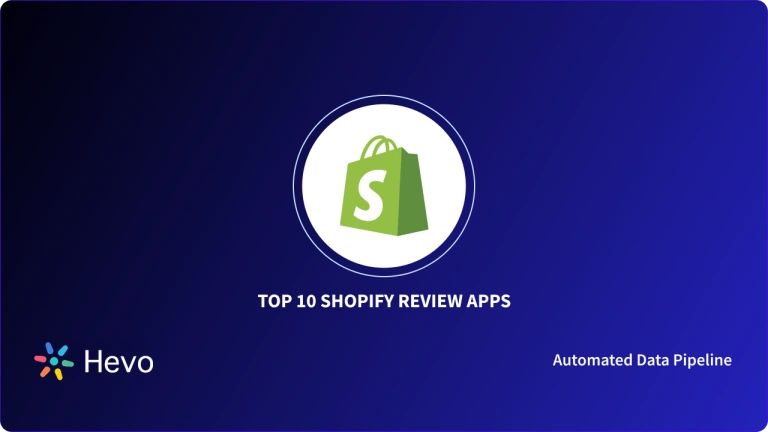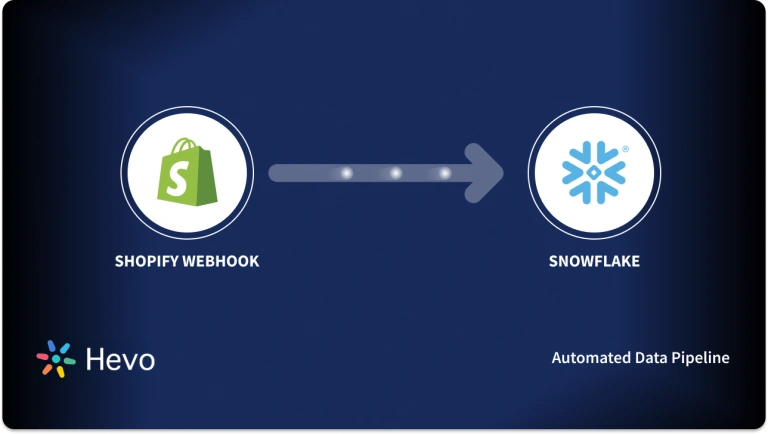Integrating Shopify and Walmart will enable small and medium-sized Shopify Store owners to reach a wider audience and leverage exciting international opportunities using the Walmart Marketplace. Further, this will also help sellers on Walmart scale up their reach and start selling beyond their traditional US market. In addition, syncing Walmart Shopify will allow you to manage inventory, keep track of Walmart products and orders seamlessly, straight through the Walmart Dashboard in Shopify.
This article will provide you with an in-depth understanding of how to set up your Walmart Shopify Integration effortlessly. It will also help you gain a holistic understanding of what Shopify and Walmart are all about, along with some key features of each of them! Read along to find out more and get started with Walmart Shopify Integration!
Table of Contents
Introduction to Shopify
Shopify is a Software as a Service (SaaS) provider in the eCommerce business established in Ottawa. It’s a Cloud-based platform for creating and hosting eCommerce sites. Shopify is the most popular Content Management System (CMS) for opening online stores and selling things in the digital world. Shopify is distinct from other popular CMS platforms such as WordPress and Blogger as it is only used to construct websites for eCommerce firms.
Small and medium-sized businesses pick Shopify to help them grow their businesses because the platform allows them to reach a larger audience, which helps them generate Sales.
Shopify has a number of features and tools that help users run Marketing, Sales, Customer Service, and Customer Engagement operations more efficiently. It has thousands of pre-made website templates that can be altered to meet the demands of users. Users can utilise Shopify to construct attractive websites that boost their brand’s worth.
Shopify is a multi-channel Content Management System (CMS) that allows customers to sell and promote their products across many social media sites, such as Facebook, Instagram, and Pinterest. Multi-channel Marketing can significantly improve a company’s online presence and client engagement.
Effortlessly manage and migrate your Shopify data with Hevo. Hevo supports Shopify and Shopify Webhooks as one of its 150+ data sources, ensuring seamless data integration and real-time synchronization.
- No-Code Solution: Easily connect and manage your Shopify data without writing a single line of code.
- Flexible Transformations: Use drag-and-drop tools or custom scripts for data transformation.
- Real-Time Sync: Keep your destination data warehouse updated in real time.
- Auto-Schema Mapping: Automatically handle schema mapping for a smooth data transfer.
Join over 2000 satisfied customers, including companies like Voiceflow and Playtomic, who trust Hevo for their data integration needs. Check out why Hevo is rated 4.7 stars on Capterra.
Get Started with Hevo for FreeIntroduction to Walmart
Walmart Inc., headquartered in Bentonville, Arkansas, is an American multinational retail firm that operates a chain of Hypermarkets (also known as supercenters), cheap department stores, and grocery stores throughout the United States.
Sam Walton launched the corporation in neighbouring Rogers, Arkansas in 1962, and it was incorporated on October 31, 1969, under the Delaware General Corporation Law. Sam’s Club retail warehouses are also owned and operated by the company. Walmart had 10,524 stores and clubs in 24 countries as of July 31, 2021, operating under 48 distinct names.
Prerequisites
- Active Shopify Account: Ensure your Shopify store is set up and running.
- Walmart Seller Account: Register as a Walmart Marketplace seller and get approval.
- Basic Knowledge of Shopify and Walmart Platforms: Familiarity with managing products, orders, and inventory.
- Product Information: Prepare accurate product details, including descriptions, prices, and inventory levels.
- Third-Party Integration Tool (Optional): Tools like Hevo Data can simplify the integration process.
- Internet Connection: A stable connection for seamless platform integration.
Steps to Set up Walmart Shopify Integration
Here are the simple steps to get started with Walmart Shopify Integration:
- Step 1: Create a Shopify store
- Step 2: Create your Walmart Marketplace Store
- Step 3: Integrate the Walmart Marketplace App with Shopify as a Sales Channel
- Step 4: Put the Finishing Touches on your Walmart Dashboard
Step 1: Create a Shopify Store
Shopify is a one-stop-shop that requires no technical knowledge to set up a fully functional store. Merchants of various sizes can easily sell their products online thanks to the platform, which includes not just an online shop but also customer engagement, fulfilment, and payment capabilities.

Step 2: Create your Walmart Marketplace Store

Keep in mind that for the Walmart Shopify Integration, there are certain criteria for international vendors when it comes to company formation, such as:
- Having a Company based in the United States (including a US W9 tax ID and mailing address).
- The ability to Ship from a Warehouse in the United States (excluding FBA).
- Product Identifiers (the product will not be acknowledged if the barcode is missing, invalid, or duplicate).
- A Return Address for foreign mail.

After you’ve completed the above steps, move on to the “Product and Integration” section.

You now need to fill in the ‘Shipping and Operations‘ section.

Now, review and finalise the procedure. You’ll have to wait one week for Walmart Marketplace to approve your seller registration after you’ve completed the process.

Step 3: Integrate the Walmart Marketplace App with Shopify as a Sales Channel
To do this, search for Walmart Integration in the Shopify App Store > Add App. Now provide your Shop’s URL and you’ll be able to log in.

Once you’ve successfully logged in, click on the Install App option.

After you’ve installed the app, you may start configuring it. With Client ID and Client Secret, the registration process is rather simple.

Following that, you can begin importing products to Walmart as follows:

You can choose one of the three options in the Import Product Options section:
- All Items available.
- Products that are published.
- Products that are filtered.
In the Shopify backend, this is your Walmart Dashboard.

Step 4: Put the Finishing Touches on your Walmart Dashboard
It’s simple to set up a dashboard, but it’s even more vital to integrate it into your business management process. To ensure credibility, fill out the form in the ‘Profiling’ area.

This completes your Walmart Shopify Integration. You have successfully integrated your Shopify Store with the Walmart application.
Understanding the Benefits of Walmart Shopify Integration
Setting up the Walmart Shopify Integration can do wonders for your business growth. Here are some of the reasons that make this integration, a must-have:
- Extend your Reach to a Worldwide Scale: Without the added trouble or time investment, you can introduce your products and brand to millions of new buyers on the Walmart Marketplace.
- Become a Member of a Select Group of Sellers: Walmart and Shopify have put a lot of effort into curating a seller community, so you won’t get lost in the crowd. You’ll have access to establish business with a variety of sellers.
- Everybody can Do: To use Shopify, no technical knowledge is required. The user interface is basic and easy to use.
- Everything is Managed using Shopify: With easy product sync and bulk editing, you can keep track of all your Walmart product inventory in Shopify.
- No Hidden or Recurring Charges: You will not be charged anything if you sign up. For each item sold, you merely pay a category-based referral fee.
You also take a look at the Top Successful Shopify Apps in 2025 to see the advantages of using Shopify.
Shopify Walmart Integration Apps
Shopify Walmart integration apps help streamline the process of syncing your Shopify store with Walmart Marketplace. These apps enable automatic inventory updates, order management, and seamless product listings. Popular options include:
- Codisto: Simplifies product listing, syncing, and managing orders.
- CedCommerce: Offers features like bulk uploads, real-time inventory sync, and analytics.
- Sellbrite: Provides multi-channel inventory and order management.
These tools save time and enhance efficiency, making it easier to manage your Shopify store and Walmart Marketplace in one place.
Third-Party Solutions for Shopify Walmart Integration
Third-party solutions simplify integrating your Shopify store with Walmart Marketplace by offering advanced automation and customization features. Some popular options include:
- Hevo Data: A no-code platform that seamlessly integrates Shopify and Walmart, enabling real-time data syncing for orders, inventory, and customer details.
- ChannelAdvisor: Manages listings, pricing, and inventory across multiple channels, including Shopify and Walmart.
- ExportYourStore: Facilitates automated data transfers between Shopify and Walmart for smooth product and order management.
Use Cases of Shopify Walmart Integration
Integrating Shopify with Walmart Marketplace can help businesses achieve the following:
- Expand Market Reach: List Shopify products on Walmart to attract more customers and boost sales.
- Centralized Inventory Management: Sync inventory across Shopify and Walmart to avoid overselling or stockouts.
- Automated Order Fulfillment: Manage Walmart orders directly from your Shopify dashboard, streamlining operations.
- Data-Driven Insights: Analyze sales trends and customer data from both platforms to improve strategies.
- Multi-Channel Consistency: Ensure pricing, descriptions, and promotions are consistent across both platforms.
Also, take a look at the Top 10 Successful Dropshipping Stores to get a better idea of why organizations consider using Shopify.
Conclusion
This article provided you with an easy step-by-step guide to help you set up Walmart Shopify Integration in no time! In addition, it introduced you to the fantastic benefits of integrating your Shopify Store with Walmart. It also provided you with an in-depth understanding of both platforms, along with a detailed list of features these platforms have in store for you.
You might wish to take your business growth a step further after learning about the Walmart Shopify Integration by employing Data Analytics techniques on your Shopify data. This will necessitate the deployment of different complex ETL techniques to transfer data from Shopify to a Data Warehouse.
Extracting complex data from Shopify and numerous other platforms can be challenging & require immense engineering bandwidth, and this is where Hevo saves the day!
Try Hevo and see the magic for yourself. Sign up for a free 14-day trial to streamline your data integration process. You may examine Hevo’s pricing plans and decide on the best plan for your business needs.
Frequently Asked Questions
1. Does Walmart integrate with Shopify?
Yes, Walmart can integrate with Shopify using apps and third-party tools to sync products, inventory, and orders between both platforms.
2. Can you dropship from Walmart to Shopify?
Yes, you can dropship products from Walmart to your Shopify store by listing Walmart’s products on your Shopify site and fulfilling orders through Walmart.
3. Which store uses Shopify?
Many businesses of all sizes use Shopify, including well-known brands like Gymshark, Allbirds, and Kylie Cosmetics, as well as smaller online stores.












